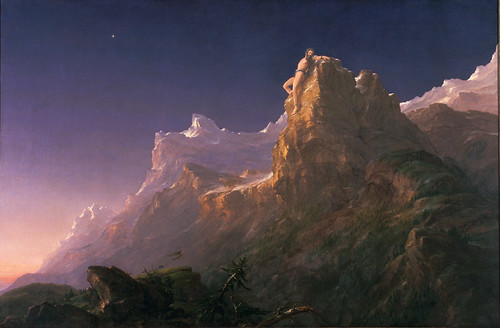 In 1852, Frederic Edwin Church painted Virginia's Natural Bridge
My Writing on Historical Architecture
In 1852, Frederic Edwin Church painted Virginia's Natural Bridge
My Writing on Historical Architecture
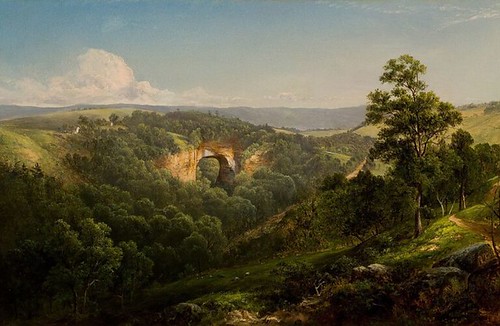 The ‘Most Sublime of Nature’s Works’
The ‘Most Sublime of Nature’s Works’
[click to read]
One of Virginia’s most amazing architectural treasures wasn't formed by the hand of man at all.
(read more)
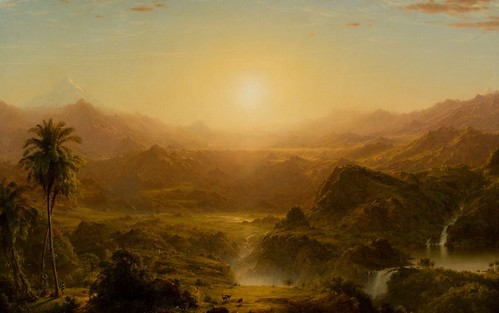 19th Century Painter Frederic Edwin Church
19th Century Painter Frederic Edwin Church
[click to read]
The story is told of a moment in the North Carolina mansion of
Richard Joshua Reynolds, American businessman and founder of the R.J. Reynolds Tobacco Company. One of the family’s small children was staring intently at an extremely large canvas in the family parlor. His mother asked him what he was admiring in the painting. He responded: “I’m looking at the church.” Indeed, he was staring at
“The Andes of Ecuador,” a painting by the great artist
Frederic Edwin Church. Thinking the child had become aware of the great artist at such a tender age, she joined him in examining the artwork—only to discover the red-tile-roofed chapel that was a tiny detail in the vast painting. That was the “church” the child was drawn to. Frederic Church’s epic paintings ended up in the grand homes of wealthy patrons, who probably missed much of the detail in the paintings they had purchased. The sheer volume of subtly rendered detail probably required
“a little child [to] lead them” (Isaiah 11:6). Truthfully, Church was a very spiritual person, and his work reflected a sense of the unseen hand behind the scenery he so beautifully rendered.
(read more)
 Olana, Frederic Edwin Church's Final Masterpiece
Olana, Frederic Edwin Church's Final Masterpiece
[click to read]
On a ridge overlooking the Hudson River, artist
Frederic Church composed his last, and perhaps grandest, work: a home and grounds for his family. He purchased the land above his first home,
“Cosy Cottage,” before his trip to the Middle East and Europe.
“I have just purchased the woodlot on the top of the hill. I want to secure if possible before I leave every rood [measure] of ground that I shall ever require to make my farm perfect.” (read more)
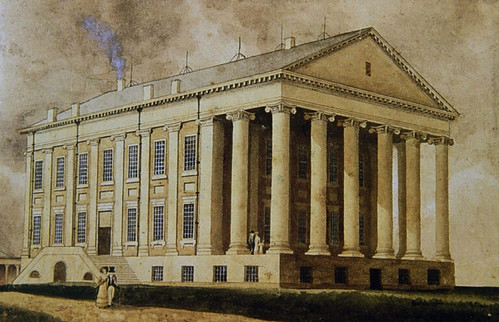 American Classicism and the ‘Gentleman Architect’ Thomas Jefferson
American Classicism and the ‘Gentleman Architect’ Thomas Jefferson
[click to read]
In 1784
Thomas Jefferson found himself in France as our first ambassador.
(read more)
 An ‘Academical Village’ as a Model for a New Republic
An ‘Academical Village’ as a Model for a New Republic
[click to read]
If you had traveled with the
Marquis de Lafayette to the Piedmont region of Virginia in 1824...
(read more)
 The Inspiration for Washington DC
The Inspiration for Washington DC
[click to read]
When the United States of America was young, the established cities of New York and then Philadelphia served as seats for the country’s government.
(read more)
 Designing the Capital City
Designing the Capital City
[click to read]
The Capitol ought to be upon a scale far superior to anything in this Country.” —George Washington to Thomas Jefferson in 1792
James Hoban was born in 1762, in Callan, Ireland. As a boy, he was an apprentice to a carpenter and a wheelwright. He later trained in the neoclassical style of architecture at the Dublin Society School. Just after the Revolutionary War, Hoban immigrated to South Carolina. There, he designed the old state Capitol building in Columbia.
(read more)
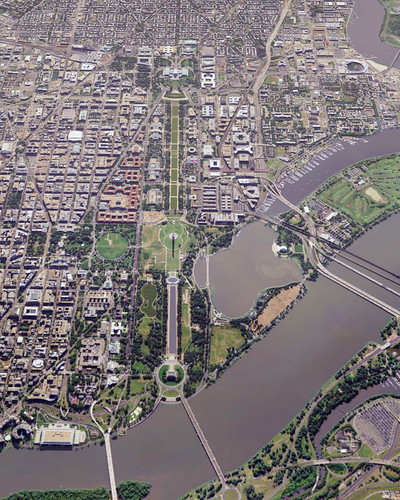
 Romantic Aspirations, Vision, and Viaducts
Romantic Aspirations, Vision, and Viaducts
[click to read]
Charles Carroll of Carrollton might well have been the
Elon Musk of his day.
(read more)
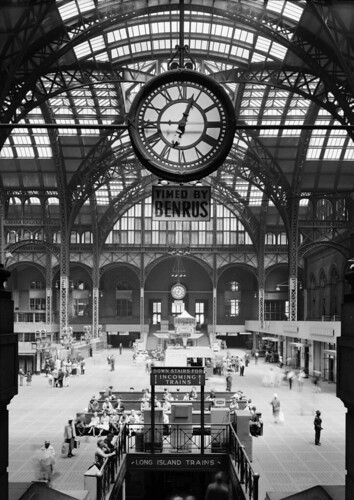 Temples of Transportation
Temples of Transportation
[click to read]
In 1862, arguably one of the darkest and most uncertain years for our republic, President
Abraham Lincoln pressed Congress to pass the Pacific Railway Act. As North and South were being ripped apart, Lincoln, a former railroad attorney, sought to use the rails to tie East and West together. America was still involved in the process of recovering from her terrible civil war, when on May 10, 1869, the Transcontinental Railroad was celebrated as complete. The railroad had been constructed in a mad dash, as the two competing lines, Union Pacific and Central Pacific, raced to complete as much track as possible. The prize, 6,400 acres of land and $16,000 for every mile of track completed, led to a spirited competition. Union Pacific’s
Thomas Durant and Central Pacific’s
Leland Stanford pushed their crews on. When they met in Utah, they kept on pushing right past each other.
(read more)
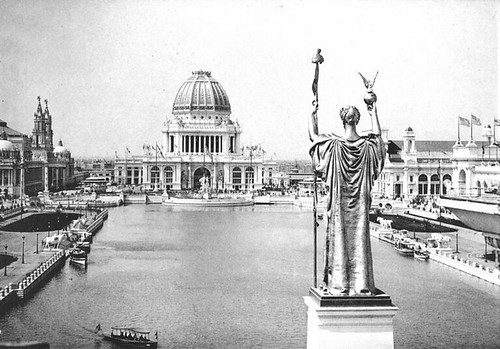 A Shining City on a Lakefront
A Shining City on a Lakefront
[click to read]
Truesdale Marshall, in
Henry Blake Fuller’s 1895 novel,
“With the Procession,” had this to say about Chicago: A
“hideous monster, a piteous, floundering monster too. It almost called for tears. Nowhere a more tireless activity, yet nowhere a result so pitifully grotesque, gruesome, appalling.” This was the assessment of the great city that had risen so rapidly in the plains of America’s Midwest. The young nation had barely survived its civil war just decades before. Chicago was still recovering from its great fire. Railroads rushed to cross and crisscross the fruited plain, building quickly. There was no time for building beautiful arched bridges. Wooden trestles were thrown up in a matter of weeks. Track was measured in miles laid per day.
“Hell on Wheels” was the order of the day. Midwestern cities were ugly, smelly, and chaotic.
But then, in the summer of 1893, a gleaming city appeared on the shores of Lake Michigan, something that didn’t seem to belong to this boisterous time. It only stood for a brief season, but it would change the course of a nation’s development.
(read more)
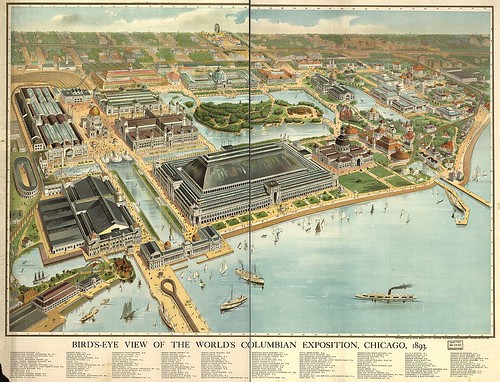 A Bird's Eye View of the 1893 Chicago World's Fair.
A Bird's Eye View of the 1893 Chicago World's Fair.
 An Afternoon at Walnut Grove
An Afternoon at Walnut Grove
[click to read]
Indomitable perseverance in a business, properly understood, always ensures ultimate success.” —
Cyrus McCormick, inventor and industrialist.
(read more)
 Alva Vanderbilt's Petit Château
Alva Vanderbilt's Petit Château
[click to read]
In 1843, young
Richard Morris Hunt and family traveled from America to Europe, where he gained his formal education. Initially, Hunt pursued training in art, but at the encouragement of his family, he took up architecture. Hunt studied under Geneva architect
Samuel Darier and later joined the Paris studio of architect
Hector Lefuel. In Paris, he studied for the entrance examinations of the
École des Beaux-Arts and became the first American to be admitted to the prestigious school.
(read more)
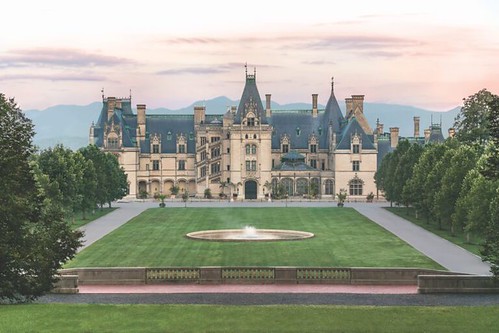 Biltmore House
Biltmore House
[click to read]
George Washington Vanderbilt II, the youngest child of
William Henry Vanderbilt, first visited the mountains of North Carolina at the age of 25. He fell in love with the highlands near Asheville and returned the following year, with his mother
Maria Louisa Vanderbilt, to begin purchasing land for a country home. Maria Vanderbilt was seeking a place with a mild climate and healing mountain springs, and George was looking for a
“place in the country.” When most people think of a country home, they think of a modest dwelling that requires minimal upkeep. When you are the son of the richest man in America, and the grandson of one of America’s most prominent entrepreneurs, you might have grander visions.
(read more)
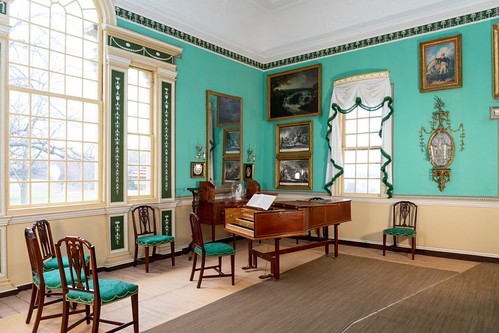 The Saving of Mount Vernon
The Saving of Mount Vernon
[click to read]
I was painfully distressed at the ruin and desolation of the home of Washington, and the thought passed through my mind: Why was it that the women of his country did not try to keep it in repair, if the men could not do it? It does seem such a blot on our country.”—Louisa Bird Cunningham
(read more)
 The Mind of Monticello
The Mind of Monticello
[click to read]
Opened to the public in 1924,
Thomas Jefferson’s beloved home of Monticello in Albemarle County, Virginia, is one of the most recognized buildings of early America. Its unique façade is reproduced on our nickel. Monticello
(Italian for “Little Mountain”) is still a favorite destination for adults and youth, as all are treated to a look into the amazing gifts of America’s third president.
(read more)
 Teaching the Next Generation to Farm
Teaching the Next Generation to Farm
[click to read]
No occupation is so delightful to me as the culture of the earth.”
—Thomas Jefferson
Polyface Farm lies gently among the rolling hills of the Shenandoah Valley of Virginia, near Little North Mountain and Elliott Knob, in Augusta County.
(read more)
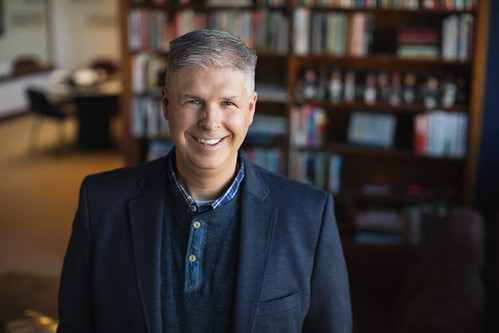 A Conversation With Charles Marohn: ‘Honor the Struggle!’
A Conversation With Charles Marohn: ‘Honor the Struggle!’
[click to read]
Walking six blocks to work each morning gives
Charles Marohn a unique insight into the vitality of his town.
(read more)
 Celebrating Bonds That Reunited America
Celebrating Bonds That Reunited America
[click to read]
The History Behind the Robinson House
To-day gladdens the hearts of all true Americans, the spectacle of a re-united country, knit together in real brotherhood of its citizens and in the bonds of an honorable, cordial and lasting pacification—and not least, the spectacle of veterans of the Army of the Potomac joining hands with veterans of [the] Army of Northern Virginia, to establish, as we here to-day establish, this “Lee Camp Soldiers’ Home.”
— Colonel Archer Anderson, Address on the opening of Lee Camp Soldiers’ Home, May 20, 1885
(read more)
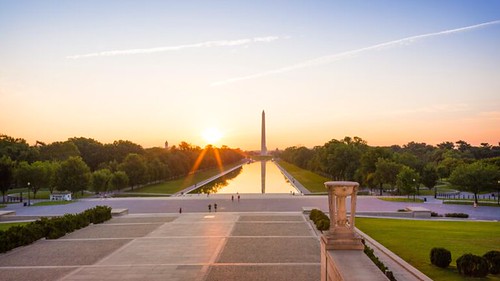 Designing a Nation's Capital
Designing a Nation's Capital
[click to read]
When the United States of America was young, the established cities of New York and Philadelphia, respectively, served as seats for the country’s government. While
Alexander Hamilton and many northerners were content with that,
Thomas Jefferson and a lot of southerners were not, and so a seat for the federal government was established in what was then a central location. In Federalist Number 43,
James Madison expressed the need for a
“federal district,” subject to Congress's exclusive jurisdiction and separate from the territory, and authority, of any single state or municipality.
(read more)
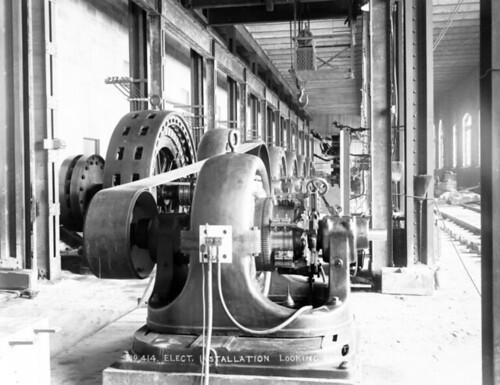 George Westinghouse
George Westinghouse
[click to read]
When the 1893 Columbian Exposition opened on the shores of Lake Michigan, visitors to the fair were treated to a glimpse of the future. Chicago, the great classical “White City” by day, at night became a magically illuminated world of colored lights.
(read more)
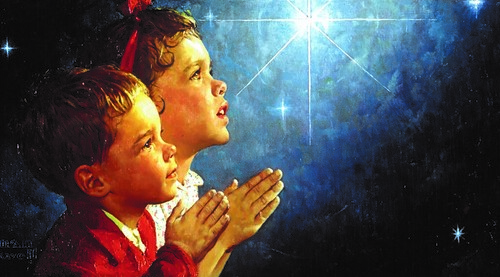 Norman Rockwell’s America
Norman Rockwell’s America
[click to read]
I was showing the America I knew and observed to others who might not have noticed.” —
Norman Rockwell (read more)
As seen in
American Essence Magazine
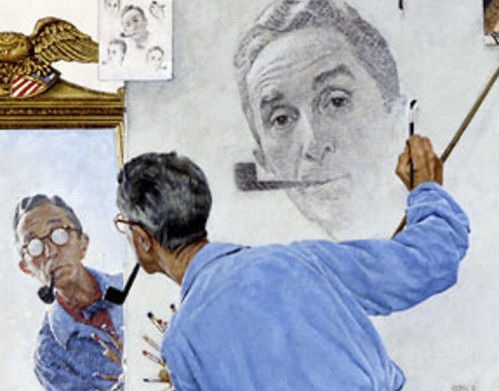
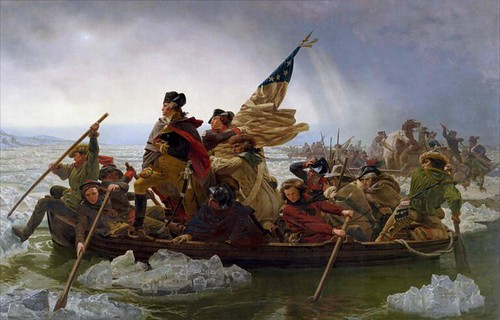 Immigrant Artist Emanuel Leutze
Immigrant Artist Emanuel Leutze
[click to read]
It is the night of December 25, 1776, and ice fills the Delaware River. The men of the Continental Army shiver as they cross under cover of night, on their way to engage Hessian troops at Trenton, New Jersey. Standing in the boat is a resolute
George Washington, face steeled for the battle to come. Before the men boarded the boats, Washington had officers read to his soldiers the words from
Thomas Paine’s
“The American Crisis,” written only days before on December 23, 1776.
(read more)
 Madison's Montpelier
Madison's Montpelier
[click to read]
Knowledge will forever govern ignorance: And a people who mean to be their own Governors, must arm themselves with the power which knowledge gives,” wrote President
James Madison. For six months, the
“Father of the Constitution” sequestered himself in his upstairs study in the family’s Virginia home, Montpelier. There, he engaged in an intensive study of civilizations—both ancient and modern—in his quest for wisdom in shaping the Constitution of a young republic. Here, he synopsized his ideas into principles he felt essential for a representative democracy: what would be known as the
“Virginia Plan,” which would become the basis for creating our Constitution.
(read more)
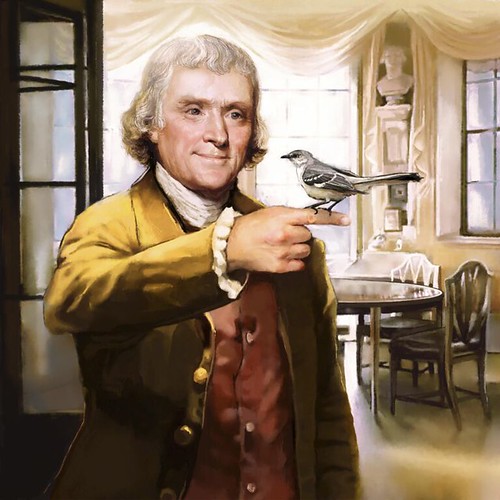 Dining with Thomas Jefferson
Dining with Thomas Jefferson
[click to read]
In 1962, our young, charismatic president
John F. Kennedy was entertaining the year’s Nobel Prize winners at the White House. He said of the group,
“I think this is the most extraordinary collection of talent, of human knowledge, that has ever been gathered together at the White House, with the possible exception of when Thomas Jefferson dined alone.” It is a great statement, to be sure.
(read more)
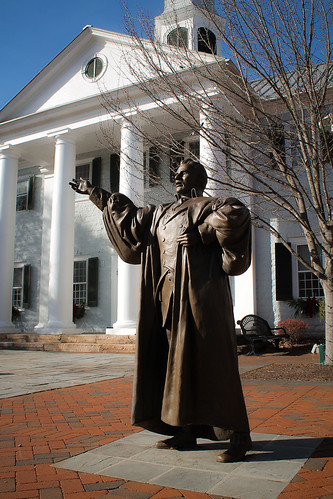 John Peter Gabriel Muhlenberg
John Peter Gabriel Muhlenberg
[click to read]
On January 21, 1776, Lutheran Pastor
John Peter Muhlenberg of Woodstock, Virginia preached from the third chapter of Ecclesiastes,
“To everything there is a season … a time of war, and a time of peace.” Opening his clerical robe to reveal the uniform of a Continental Army Colonel, Pastor Muhlenberg then added,
“and this is the time of war.” From his congregation, 162 men kissed their wives and walked down the aisle, enlisting on the spot.
(read more)
 The Germans Who Shaped Virginia
The Germans Who Shaped Virginia
[click to read]
When the first settlers of Virginia arrived in 1607, a bountiful land extending west through rolling hills, forested mountains, and fertile river valleys lay before them. It might have seemed like Eden until the colonists faced the droughts of summer and the long deprivation of winter. Though the first colonists barely survived, the land proved ideal for growing tobacco. Virginia established itself as a colony with borders drawn on paper all the way to the Mississippi River. Great plantations hugged the wide mouths of its bays and rivers, where its cash crops could be easily exported. Its piedmont, mountains, and great valley remained unsettled.
(read more)
 Frédéric Auguste Bartholdi ‘Enlightens the World’
Frédéric Auguste Bartholdi ‘Enlightens the World’
[click to read]
My only ambition has been to engrave my name at the feet of great men and in the service of grand ideas,” wrote
Frédéric Auguste Bartholdi.
(read more)
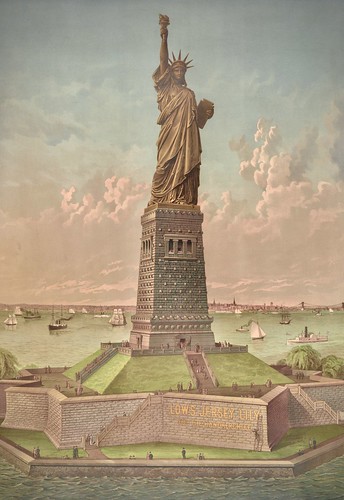
 The Roeblings' Brooklyn Bridge
The Roeblings' Brooklyn Bridge
[click to read]
After many long years of planning and building, along with numerous setbacks, the Brooklyn Bridge opened to traffic on May 24, 1883. The first vehicle to cross the bridge was
Emily Roebling’s horse-drawn carriage. Emily carried with her a rooster in a cage symbolic of the victory realized that day. The victory was wrought from the darkness of the bridge’s deep underwater foundations, now realized in the vast structure that towered in the light traversing the river. As Emily gazed up at the bridge’s great gothic arches, which resembled the windows of a mighty cathedral, she reflected on her 11-year struggle, carrying a torch passed to her from her father-in-law,
John Roebling, and her husband,
Washington Roebling. Before the Brooklyn Bridge could come to symbolize a mighty American city, it had to begin with the vision of one man.
(read more)
 Bierstadt’s Brushstrokes
Bierstadt’s Brushstrokes
[click to read]
Bring me men to match my mountains, Bring me men to match my plains, Men with empires in their purpose, And new eras in their brains,” penned the American poet
Sam Walter Foss in his poem,
“The Coming American.” (read more)
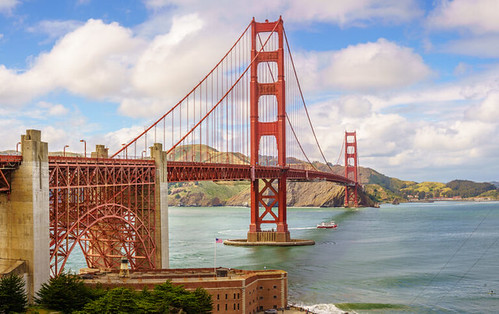 Building the Golden Gate Bridge
Building the Golden Gate Bridge
[read more]
Today, the Golden Gate Bridge has come to symbolize San Francisco, and it is the universally recognizable icon of that great port city. Although conceived as a way to move people from place to place, it has become a destination in its own right. Spanning the Golden Gate Strait, a place of stunning natural beauty, the bridge is itself an architectural masterwork. Her tall tapered towers and graceful cables evoke a sense of awe as they appear out of a fog-shrouded channel. The distinctive terra cotta color contrasts beautifully with the rugged cliffs on both shores of the strait. The original design first proposed for the famous bridge, however, was nothing like what we see today.
(read more)
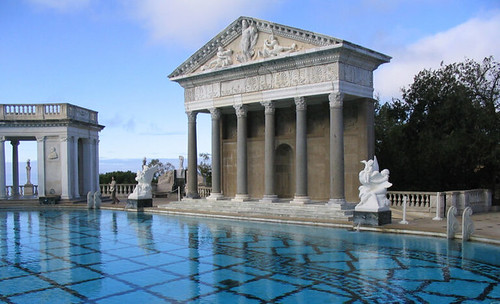 Architect Julia Morgan’s Valuable Contributions
Architect Julia Morgan’s Valuable Contributions
[click to read]
Sometime early in the 20th century a diminutive woman, smartly dressed in a modest dark suit, stepped onto a construction site. She was soft-spoken, but when she spoke,
“grown men tremble[d].” She was a master builder, an architect in the same class as
Richard Morris Hunt and
Stanford White. Indeed, she was the contemporary of these legendary designers—and her work stands firmly alongside theirs.
(read more)
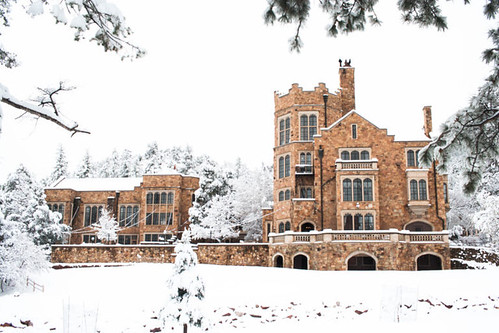 Tudor Castle with Cutting-Edge-Technologies
Tudor Castle with Cutting-Edge-Technologies
[click to read]
Glen Eyrie Castle is a magnificent English Tudor Revival house with a view of Colorado’s Garden of the Gods. Designed by
Frederick J. Sterner and
Thomas MacLaren, it is actually the second house built on the site. Both were constructed for
William Jackson Palmer, the founder of Colorado Springs.
(read more)
 The Breakers
The Breakers
[click to read]
In the autumn of 1885,
Cornelius Vanderbilt II paid a little over $400,000 for a summer cottage in Newport, Rhode Island. The Queen Anne style house, built in 1878, was considered the
“crown jewel” of Newport.
(read more)
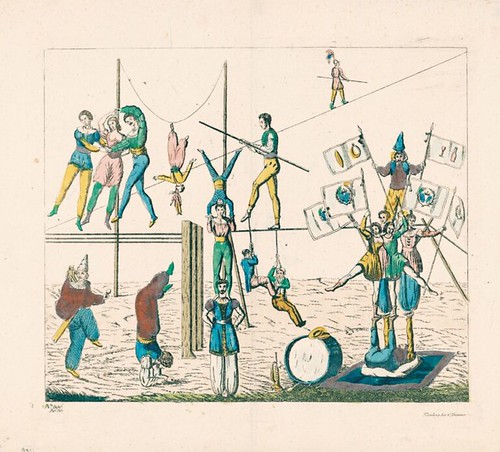 Mom and the Circus Acrobats
Mom and the Circus Acrobats
[click to read]
It is recorded that in 1793,
George Washington went to the circus in Philadelphia, perhaps one of the first circuses in America. It was, by all accounts, mainly an equestrian show. It did have jugglers, clowns, and even a rope walker. Around 1825, American circuses began to use tents.
(read more)
 A Pair of Eagles: The Lindberghs
A Pair of Eagles: The Lindberghs
[click to read]
During two days in May of 1927,
Charles Augustus Lindbergh stepped from obscurity into history. His 3,600-mile transatlantic flight from New York to Paris is legendary. Flying solo for 33.5 hours, he became known as the
“Lone Eagle.” Seven months after that fateful flight, the young aviator met someone who would become his partner as he explored new air routes, flying with him for uncharted miles. She was
Anne Morrow, daughter of
Dwight Whitney Morrow, the U.S. Ambassador to Mexico.
(read more)
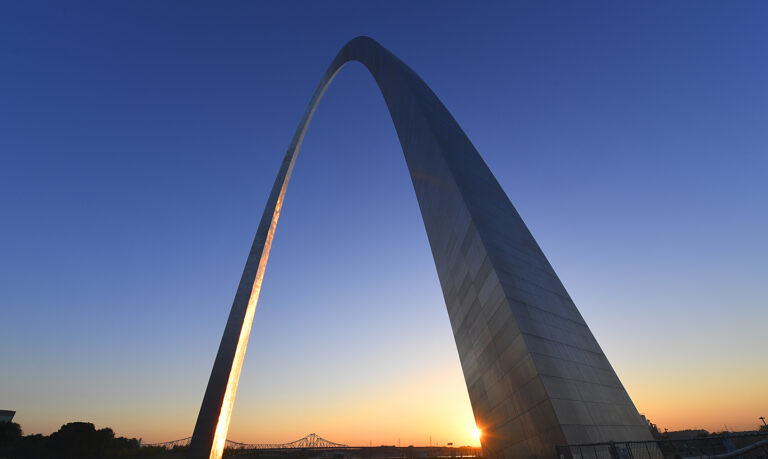 The Gateway Arch
The Gateway Arch
[click to read]
The Gateway Arch majestically dominates the skyline of St. Louis, Missouri, and has come to symbolize the great city in the heartland of America. Reflecting St. Louis’s role in the nation’s westward expansion, the monument was constructed to memorialize the few hearty souls that set out to explore a new frontier.
Thomas Jefferson sent his close confidantes
Meriwether Lewis and
William Clark on an epic excursion from the cultivated hills of Virginia to the country’s newly purchased and unchartered Louisiana territory. In the early 19th century, the shores of the Mississippi represented no less than the beginnings of a journey to
“the ends of the earth.” (read more)
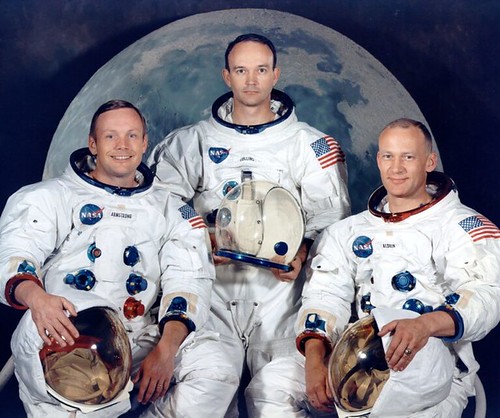 Grumman's Lunar Lander
Grumman's Lunar Lander
[click to read]
In the fall of 1962, a little airplane manufacturer on Long Island, Grumman Aircraft Engineering Corporation, beat out seven competitors for the lunar module contract. How did this happen?
(Read more)




































